LIENS / LINKS :
diaporama sur les villages Zafimaniry avec une superbe bande son :
http://www.youtube.com/watch?v=42T_wgJdjF8
Famadihana chez les betsileo :http://www
.youtube.com/watch?v=CLvExco-h2s
Je vais vous parler des Famadihanas (retournements des morts), incontournable à Madagascar, c'est l'exhumation des défunts, une" pratique" unique au monde Le retournement des morts est un rite ancestral très encré dans la vie malgache des Hautes Terres. Les malgaches l’appellent le Famadihana,(l’exhumation), cette cérémonie très importante est renouvelée environ tous les 7 ans, à la saison sèche (entre Juin et Octobre). J' ai pu assister sommairement à deux cérémonies sans pouvoir filmer , ni photographier , sauf les tombes avant .
Le
culte des ancêtres est très présent à Madagascar
. Dans les Hautes
Terres, le Famadihana en est la cérémonie la plus importante. Bien
d’autres croyances et coutumes présentes au quotidien sont liées à ce
culte des ancêtres : Les fadys, l’appartenance à la Terre, le rapport à
la mort… Pour le peuple merina, les ancêtres sont encore présents
et se rappellent à nous par l’intermédiaire du Ombiasy : devin
,guérisseur ou sorcier selon l’occasion.
Les malgaches ont une vénération profonde à l’égard de leurs
morts et portent une grande importance aux rites funéraires ancestraux.
La construction de tombeaux splendides, solides et couteux est le
premier attachement aux morts. Ils dépensent parfois toute leur fortune
pour avoir un magnifique tombeau. Les tombeaux malgaches peuvent être en bois, en pierres, ou en briques. Les plus anciens comme celui des rois locaux possèdent une guérite où était posté un garde et des emplacements pour le festin du Famadihana. Au dessous du tombeau, il y a une pierre taillée soit au milieu, soit sur son coin Nord-Est. C’est là que se pratiquent les offrandes et les divers rites cultuels
."
Lambamena, le nouveau linceul.
"La famille apporte le nouveau linceul (lambamena) tissé en soie sauvage,
et change le mort. C’est à ce moment que les membres peuvent le saluer,
le questionner, parfois même danser avec lui.
Le lambamena est
obtenu par le tissage de la soie d’un bombyx du pays appelé landy, dite
soie sauvage. Elle est malheureusement de plus en plus souvent
remplacée par du tissus importé pour des raisons financières."
La cérémonie du Famadihana.
"Famadihana des Hautes Terres"La cérémonie du Famadihana dure deux jours
. Le premier jour, les familles se retrouvent. On abat le bétail (porcs, zébus) qui sera dégusté durant tout la fête, on prépare la cérémonie. Le retournement, l’exhumation est réalisée le deuxième jour : les familles organisatrices invitent les villageois et les autorités locales au grand festin : le Bemenaka (littéralement beaucoup gras, huileux) L’après-midi, les convives se dirigent au tombeau accompagnées de groupes de musiciens. L’ouverture du tombeau est ordonnée par le Ombiasy (le devin guérisseur). C’est lui qui décide et parle au nom des ancêtres. Il joue un rôle très important dans la vie des malgaches. Il doit être consulté avant toute décision importante. Et ceux qui ne lui obéissent pas craignent sa sorcellerie. Après l’exhumation du corps, c’est le discours du chef du village, il fait sortir les cadavres dont chaque famille s’occupe. C’est le moment de la convivialité entre les vivants et les morts : les familles boivent beaucoup de rhum et en aspergent leurs ancêtres, dansent, chantent… Les malgaches pratiquent encore
cette coutume pour demander la bénédiction aux morts, c’est aussi
l’occasion de rassembler tous les membres et amis de la famille ou le
lieu des réconciliations. Lorsqu’un tombeau est trop petit, la famille
décide d’en inaugurer un nouveau, c’est alors le plus grand Famadihana
pour de nombreuses générations."
Un touriste peut participer ou être spectateur d’un Famadihana, mais
on doit à poser les bonnes questions pour ne pas froisser les hôtes,
(si photos, attitudes à prendre, offrandes…) et être bien accompagné
. Ce qui était mon cas , mais après avoir bu du rhum , cela a changé la donne ...c'est moi qui était devant à l'attendre pour revenir sur nos pas ... Cependant faire gaffe à ne pas vous laisser emmener par n’importe qui, n’importe où. A la saison des Famadihana, tous les tireurs de
pousse-pousse prétendent connaitre une exhumation le jour même, ou le lendemain .Certains
touristes se sont laisser emmener sur des kilomètres sans rien voir,
mais il faut payer la course ! (la bonne affaire).business is business , my friend .
ENGLISH VERSION :
I'm going to talk to you about the Famadihanas (reversals of the dead),
in Madagascar, it is the exhumation of the dead, a "practice" unique in
the world the reversal of the dead is an ancestral rite very inked in
Malagasy life of the Highlands. The Malagasy
people call it the Famadihana, (the exhumation), this very important
ceremony is renewed approximately every 7 years, in the dry season
(between June and October). I was able to attend two ceremonies summarily without filming or photographing, except before , on graves
.
The ancestor worship is very present in Madagascar. In the highLand, the Famadihana is the most important ceremony. other beliefs and customs present in everyday life are related to thisancestor worship: fadys, belonging to the Earth, the report tothe death... The merina people, ancestors are still presentand remember to us through the Ombiasy: devinhealer or sorcerer depending on the occasion.
The Malagasy have a deep reverence for theirdead and bear great importance to ancestral burial rites.The construction of tombs splendid, solid and expensive is thefirst attachment to the dead. They sometimes spend all their fortuneto have a magnificent Tomb
. The Malagasy tombs can be wooden, stone, or brick.
The most ancient as that of the local Kings have a gatehouse where wasposted a guard and locations for the feast of the Famadihana. To thebottom of the Tomb, there is a stone carved either in the middle or onits northeast corner. It is there that are practised offerings andvarious worship rites."
Lambamena, the new shroud.
"The family brings the new (lambamena) shroud woven wild silk,and change the death. It was at this time that members can welcomequestioning him, sometimes even dancing with him.The lambamena isobtained by the weaving of the so-called a country called landy, bombyx silkWild silk
. It is unfortunately more and more often"replaced by the fabrics imported for financial reasons."
The Famadihana ceremony.
"Upland Famadihana"
The Famadihana ceremony lasts two days.
The first day, the families themselves. Felled cattle(pigs, zebus) which will be tasted during all day, preparing theceremony.The reversal, the exhumation is done thesecond day: organizing families invite villagers andlocal authorities in the great feast: the Bemenaka (literallymuch fatty, oily) in the afternoon, guests head to theTomb accompanied by groups of musicians.The openingthe tomb is ordered by the Ombiasy (devin healer). It is hewho decides and speaks on behalf of the ancestors. It plays a very important rolein the life of the Malagasy. It must be consulted before any decisionimportant. And those who do not obey him fear his witchcraft
.
After the exhumation of the body, it is the speech of the head ofvillage, dragged the bodies dealt with each family. It isthe moment of conviviality between the living and the dead: thefamilies drink a lot of rum and sprinkle their ancestors,dance, sing... The Malagasy still practiceThis custom to ask the blessing to the dead, it is alsothe opportunity to gather all the members and friends of the family or theinstead of reconciliation. When a tomb is too small, the familyDecides to launch a new, it is then the largest Famadihanafor many generations."
A tourist can participate or be a spectator of a Famadihana, butto ask the right questions for not to offend the hosts,(if photos, taking attitudes, offerings...) and be well accompanied. What
was my case, but after drinking rum, that changed the situation... it
is me who was after to expect it to retrace our steps..!!
. However make gaff does not let you take by anyone, anywhere. The Famadihana, all shooters season ofrickshaw claim to know an exhumation the same day or the next day
.Sometourists are let take for miles without seeing anything,.but it is necessary to pay the race! (bargain)
Les Famadihanas
Wednesday, September 18, 2013
 Ambositra, Madagascar
Ambositra, Madagascar
Other Entries
-
1Tana, un immense village .
Sep 0711 days prior Antananarivo, Madagascarphoto_camera17videocam 0comment 0
Antananarivo, Madagascarphoto_camera17videocam 0comment 0 -
2Antananarivo, l'atypique.
Sep 0810 days prior Antananarivo, Madagascarphoto_camera25videocam 0comment 0
Antananarivo, Madagascarphoto_camera25videocam 0comment 0 -
3Ampéfy
Sep 117 days prior Ampéfy, Madagascarphoto_camera9videocam 0comment 0
Ampéfy, Madagascarphoto_camera9videocam 0comment 0 -
4L'ilot de la Vierge
Sep 126 days prior Ampéfy, Madagascarphoto_camera14videocam 0comment 0
Ampéfy, Madagascarphoto_camera14videocam 0comment 0 -
5Invitation à un mariage malgache
Sep 135 days prior Ampéfy, Madagascarphoto_camera21videocam 0comment 0
Ampéfy, Madagascarphoto_camera21videocam 0comment 0 -
6Les chutes de la Lily
Sep 144 days prior Ampéfy, Madagascarphoto_camera14videocam 0comment 0
Ampéfy, Madagascarphoto_camera14videocam 0comment 0 -
7La RN 43 en direction d'Antsirabé
Sep 153 days prior Ampéfy, Madagascarphoto_camera20videocam 0comment 0
Ampéfy, Madagascarphoto_camera20videocam 0comment 0 -
8Antsirabé, " pousse pousse Land"
Sep 171 day prior Antsirabé, Madagascarphoto_camera22videocam 0comment 0
Antsirabé, Madagascarphoto_camera22videocam 0comment 0 -
9Escapade à vélo
Sep 171 day prior Betafo, Madagascarphoto_camera23videocam 0comment 0
Betafo, Madagascarphoto_camera23videocam 0comment 0 -
10Ambositra
Sep 18earlier that day Ambositra, Madagascarphoto_camera24videocam 0comment 0
Ambositra, Madagascarphoto_camera24videocam 0comment 0 -
11Les Famadihanas
Sep 18 Ambositra, Madagascarphoto_camera10videocam 0comment 0
Ambositra, Madagascarphoto_camera10videocam 0comment 0 -
12Circoncision à Faniarivo
Sep 191 day later Ambositra, Madagascarphoto_camera16videocam 0comment 0
Ambositra, Madagascarphoto_camera16videocam 0comment 0 -
13Au pays Zafimaniry
Sep 191 day later Ambositra, Madagascarphoto_camera39videocam 0comment 0
Ambositra, Madagascarphoto_camera39videocam 0comment 0 -
14Fianarantsoa
Sep 213 days later Fianarantsoa, Madagascarphoto_camera12videocam 0comment 0
Fianarantsoa, Madagascarphoto_camera12videocam 0comment 0 -
15Le train mythique
Sep 213 days later Fianarantsoa, Madagascarphoto_camera21videocam 0comment 0
Fianarantsoa, Madagascarphoto_camera21videocam 0comment 0 -
16Manakara, balade en pirogue
Sep 224 days later Manakara, Madagascarphoto_camera13videocam 0comment 0
Manakara, Madagascarphoto_camera13videocam 0comment 0 -
17Lémuriens et déforestation
Sep 235 days later Fianarantsoa, Madagascarphoto_camera28videocam 0comment 0
Fianarantsoa, Madagascarphoto_camera28videocam 0comment 0 -
18Les steppes du sud
Sep 246 days later Ranohira, Madagascarphoto_camera27videocam 0comment 0
Ranohira, Madagascarphoto_camera27videocam 0comment 0 -
19Sarodrano , un bout du monde..
Sep 268 days later Anakao, Madagascarphoto_camera34videocam 0comment 0
Anakao, Madagascarphoto_camera34videocam 0comment 0 -
20Saint Augustin
Sep 279 days later Anakao, Madagascarphoto_camera16videocam 0comment 0
Anakao, Madagascarphoto_camera16videocam 0comment 0 -
21Anakao
Oct 0113 days later Anakao, Madagascarphoto_camera25videocam 0comment 0
Anakao, Madagascarphoto_camera25videocam 0comment 0 -
22Tuléar, "mouillez là"
Oct 0214 days later Toliara, Madagascarphoto_camera6videocam 0comment 0
Toliara, Madagascarphoto_camera6videocam 0comment 0 -
23Le peuple vézo
Oct 0315 days later Toliara, Madagascarphoto_camera9videocam 0comment 0
Toliara, Madagascarphoto_camera9videocam 0comment 0 -
24Au pied de l'Andringitra
Oct 0416 days later Ambalavao, Madagascarphoto_camera27videocam 0comment 0
Ambalavao, Madagascarphoto_camera27videocam 0comment 0 -
25A la conquête du Pic Bobby
Oct 0517 days later Ambalavao, Madagascarphoto_camera51videocam 0comment 0
Ambalavao, Madagascarphoto_camera51videocam 0comment 0 -
26La vallée du Tsaranoro
Oct 0618 days later Ambalavao, Madagascarphoto_camera10videocam 0comment 0
Ambalavao, Madagascarphoto_camera10videocam 0comment 0 -
27En route vers la soie
Oct 0719 days later Ambositra, Madagascarphoto_camera15videocam 0comment 0
Ambositra, Madagascarphoto_camera15videocam 0comment 0 -
28Le train Dia Soa
Oct 0719 days later Tamatave, Madagascarphoto_camera25videocam 0comment 0
Tamatave, Madagascarphoto_camera25videocam 0comment 0 -
29La route de l'impossible , la RN 5
Oct 0921 days later Soanierana Ivongo, Madagascarphoto_camera6videocam 0comment 0
Soanierana Ivongo, Madagascarphoto_camera6videocam 0comment 0

 Ambositra, Madagascar
Ambositra, Madagascar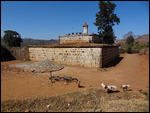
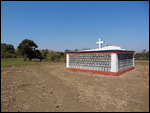
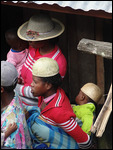
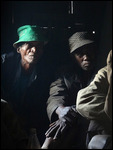
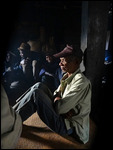
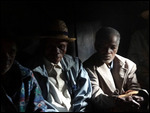
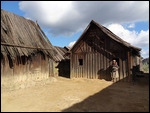
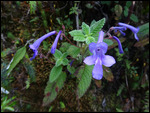
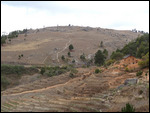
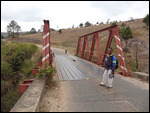

2025-05-22